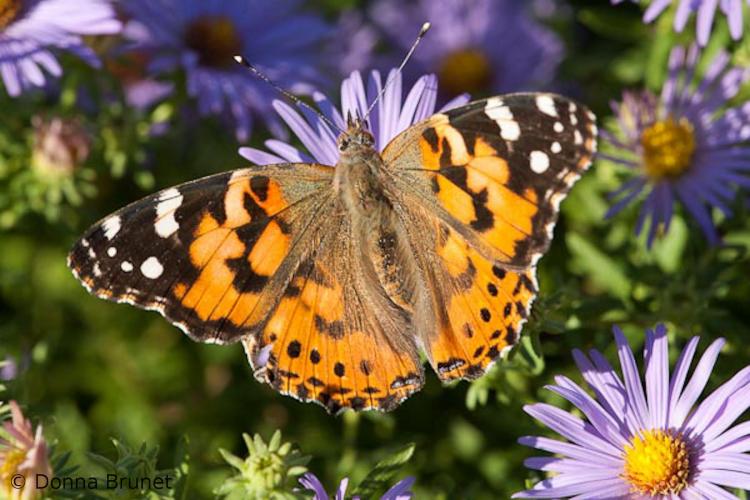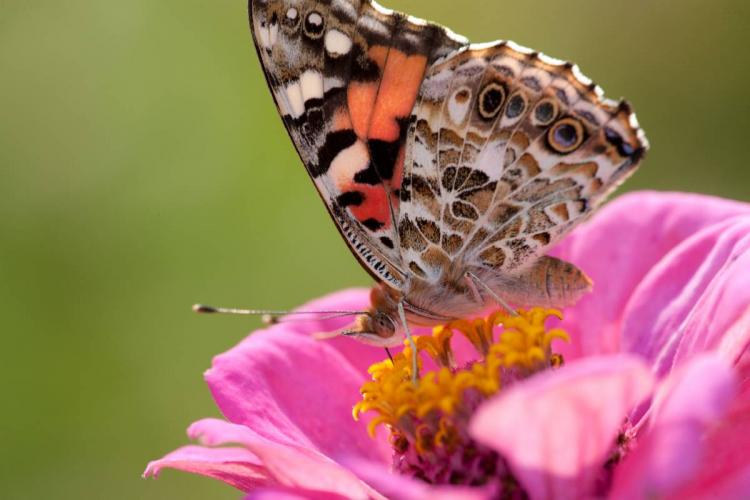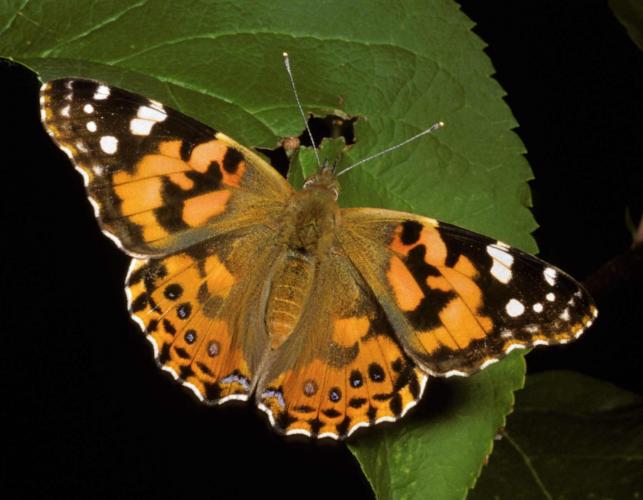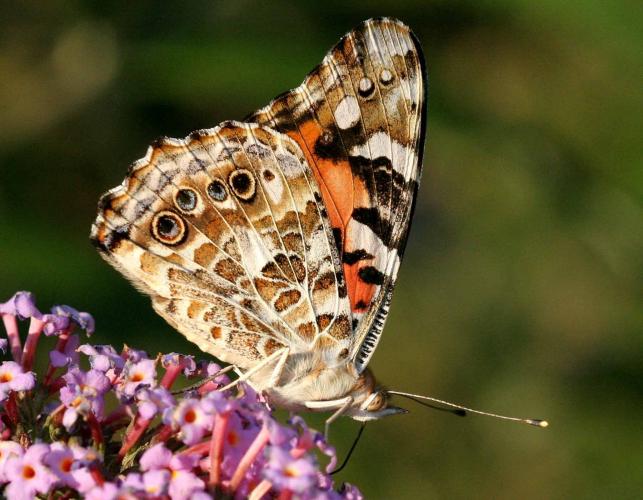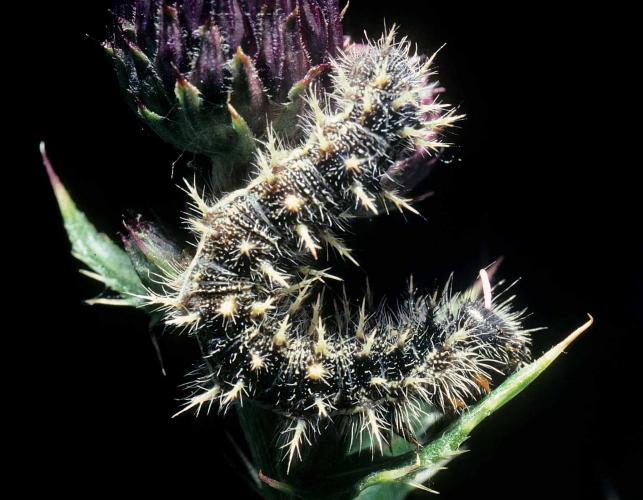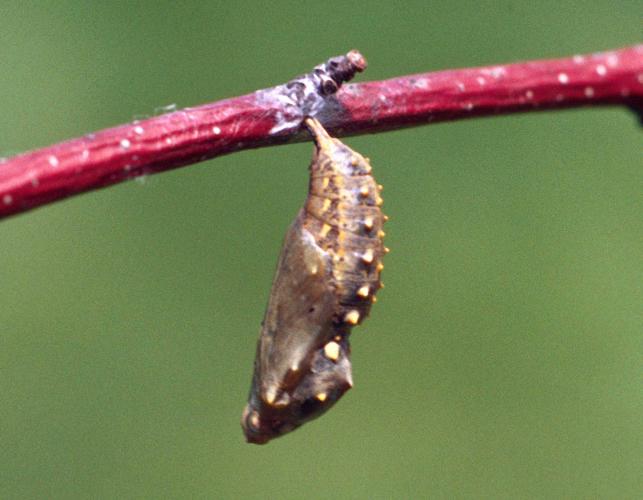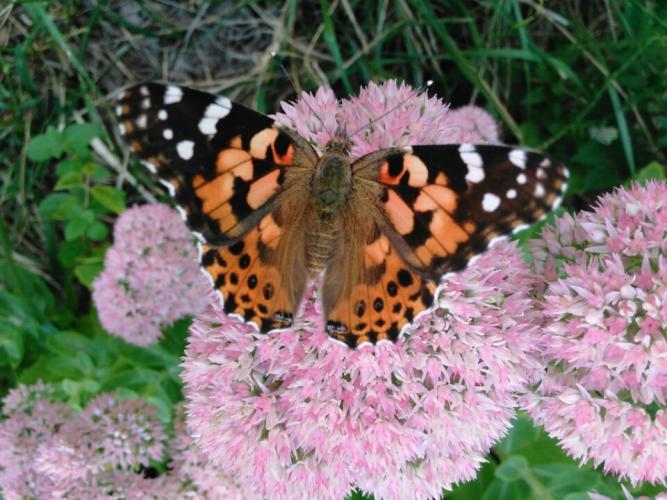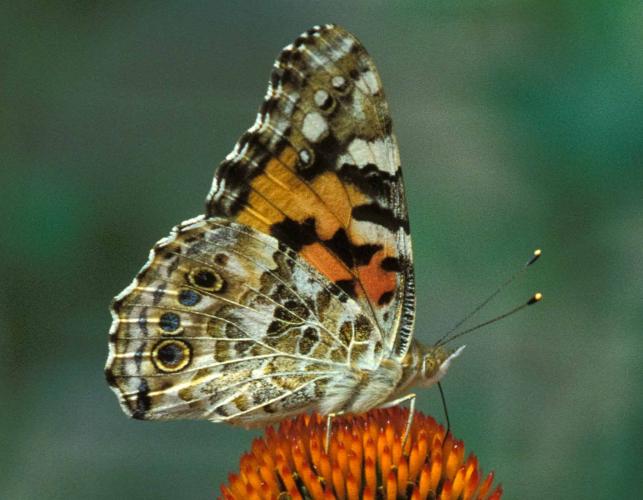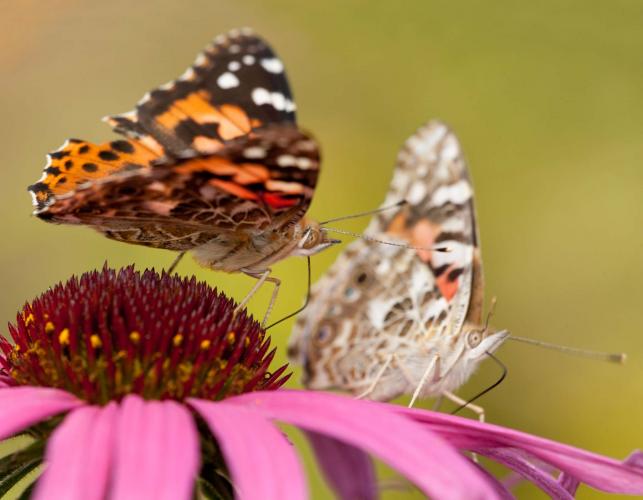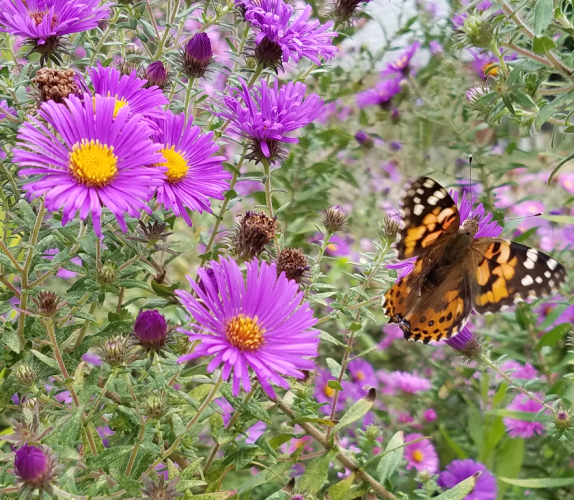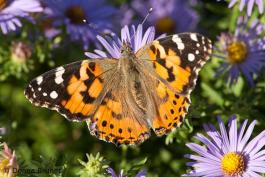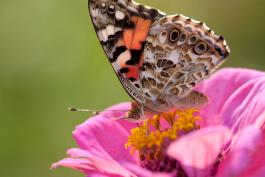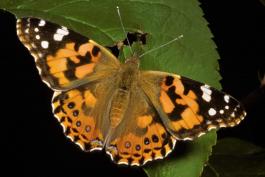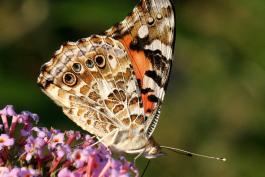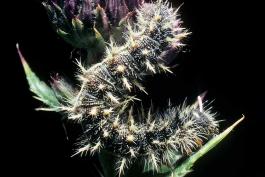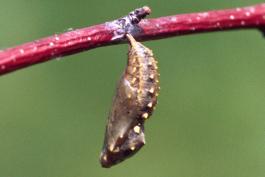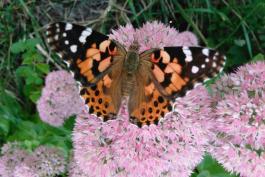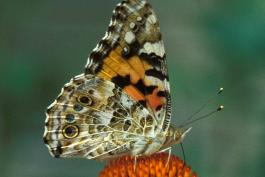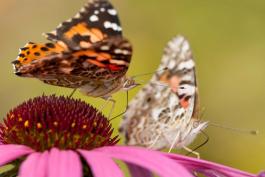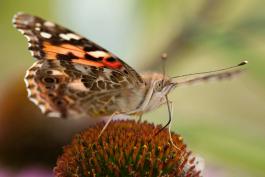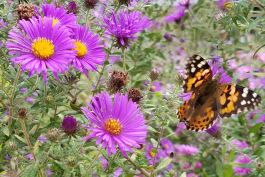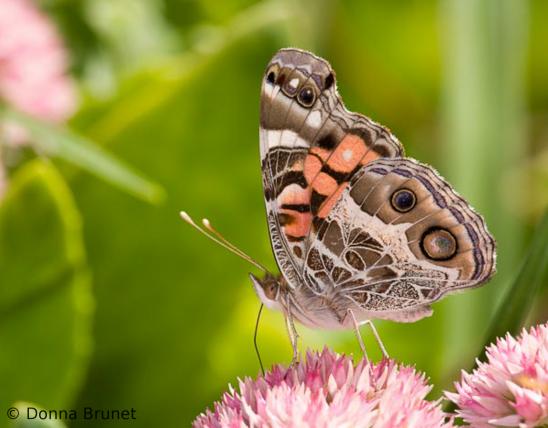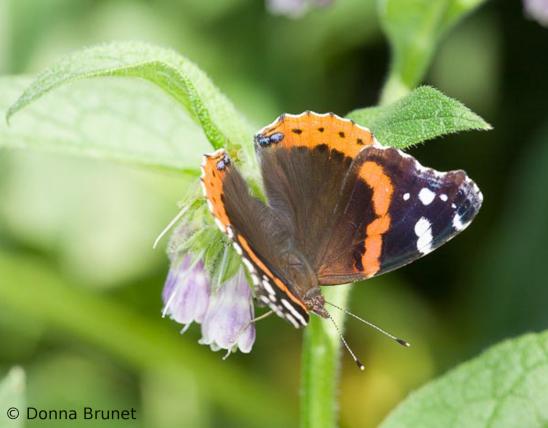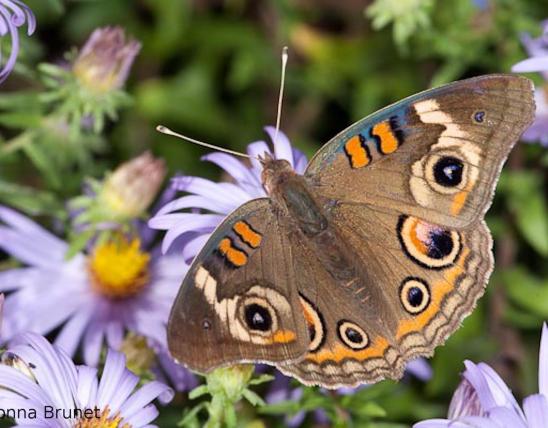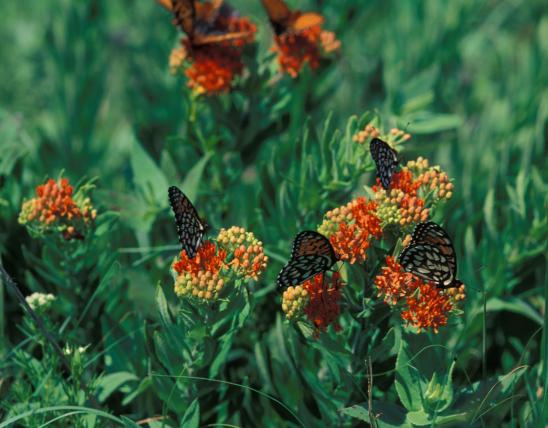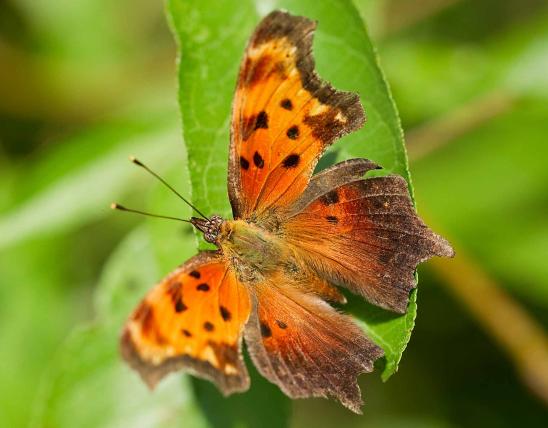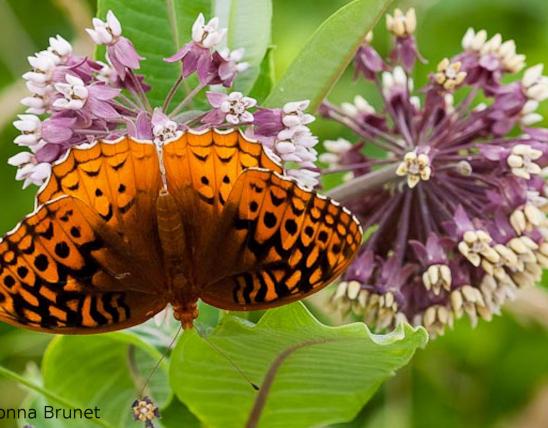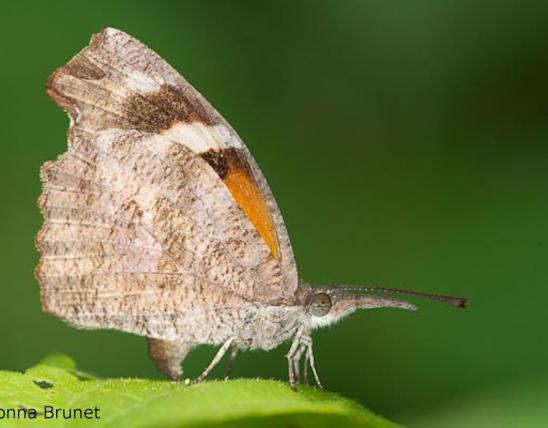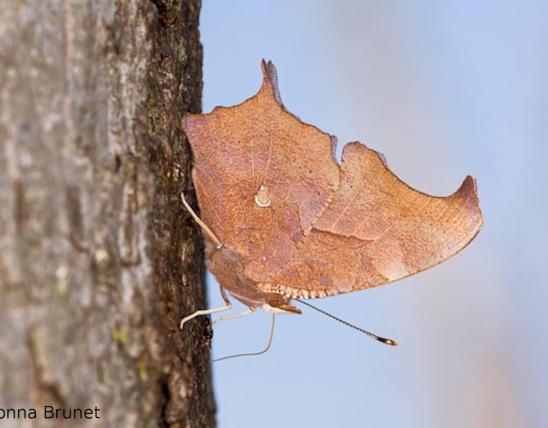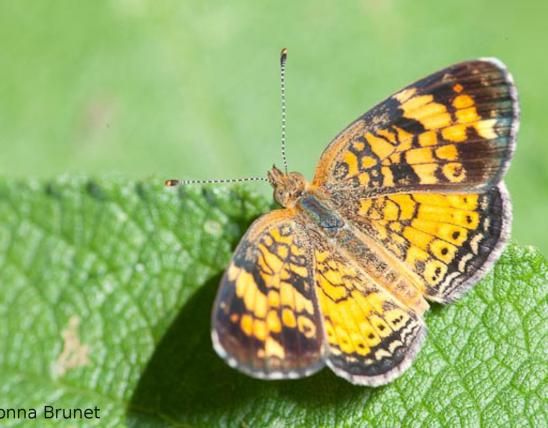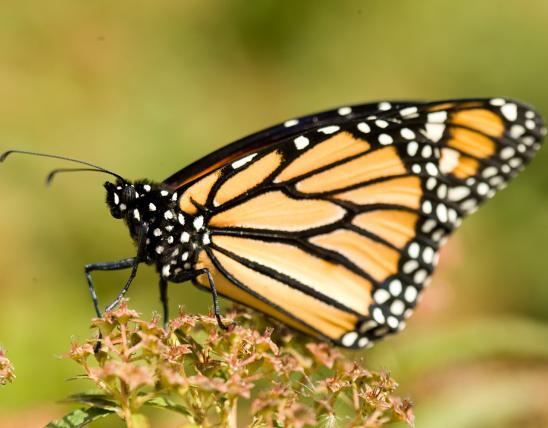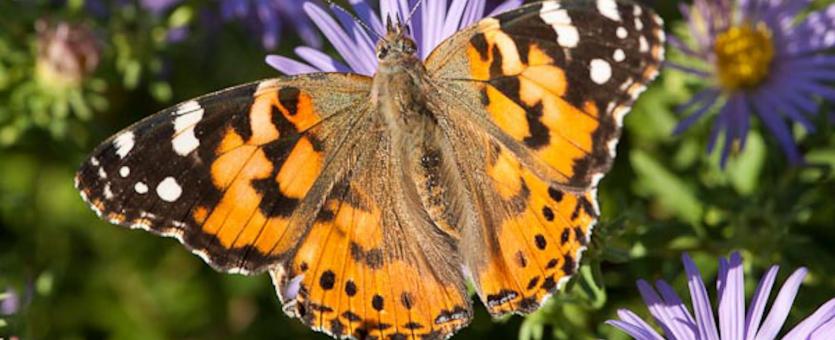
The painted lady is a delicately patterned butterfly found nearly worldwide. It migrates to Missouri in spring. There are several broods.
Adult: Like the American lady (V. virginiensis), this is an orange and black butterfly with white spots on the dark forewing tips and white cobwebbing on the brown undersides of the hindwings. Painted ladies have 4 small eyespots on the underside of the hindwing. Seen from above, the wide dark median forewing band, which is broken into two parts, has a heavy connecting bar. The spots on the hindwing are well separated and all about the same size.
Larvae are greenish yellow to lavender, with yellowish spines and a yellow stripe on the sides.
Similar species: The American lady (V. virginiensis) is very similar; the easiest way to tell them apart is the eyespots on the underside of the hindwing: the painted lady has 4 small ones, the American lady has 2 large ones.
Wingspan: 1¾–2½ inches.
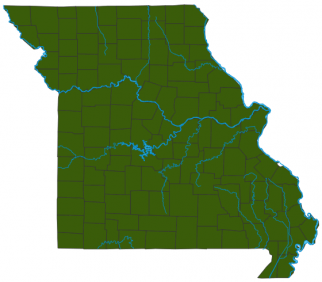
Statewide.
Habitat and Conservation
This butterfly is found worldwide, with the exception of South America and Antarctica. It occurs in nearly any kind of open habitat.
Food
Caterpillars construct a silk nest on the leaves of their host plants, which shelters them as they chew. They prefer thistle (Circium) leaves but use over 100 species of nonwoody plants, frequently in the sunflower family but also other plant families. The ability of the caterpillars to feed on a wide variety of plants is one factor in the nearly worldwide range of this species. The adults feed on the nectar from a variety of flowers.
Status
Breeding summer resident. This and other species in genus Vanessa (including the American lady and red admiral) are migratory, much like the monarch. The painted lady survives winters in northern Mexico, then travels great distances as it repopulates most of the United States and Canada.
Life Cycle
Painted ladies arrive from the south in late March and fly until November. There are multiple broods. They frequently lay eggs on host plants within patches of nectar flowers even if those plants don’t provide for optimal caterpillar growth. Increasing a female’s sugar consumption increases her longevity and the total number of eggs she lays. Painted ladies lay a large number of small eggs in a lifetime, opting for quantity over quality.
Human Connections
The commonness and abundance of this butterfly makes it an excellent subject for biological investigation. Schoolchildren witness the process of larval growth and metamorphosis. Professional biologists study the migration patterns and mating behaviors.
Ecosystem Connections
The caterpillars are herbivores that graze on vegetation. The adults serve a role in pollination. All stages provide food for predators. In years when the populations of this species are especially large, the larvae serve as a check on thistle populations.
